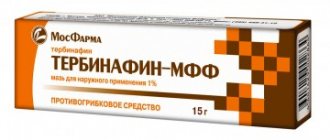Histamine type 1 receptor antagonists, or H1 receptor , have been widely used in clinical practice for more than 70 years. Their main indication today remains the symptomatic and basic treatment of one of the most common diseases, which affects almost every fifth person in the world - allergies. Today, more than 150 types of H1 blockers are registered in the Russian Federation, which are represented by several dozen active ingredients. Knowing their properties, indications, contraindications, and drug interactions is essential to counseling clients with prescriptions and requests for antiallergy medications. This article will help our readers sort out the representatives of this broad pharmacological group.
Two generations of H1 blockers
One of the most important mediators of allergic reactions, histamine, released by mast cells, exhibits a complex of pathological effects after interacting with histamine H1 receptors. Their stimulation is accompanied by dilation of arterioles, increased permeability of the vascular wall, tissue edema, local redness of the skin, and itching.
H1 blockers (H1 blockers) prevent the effects of histamine, playing an important role in the treatment of allergic reactions - allergic rhinitis, urticaria and so on. It should be noted that they block the effect of histamine on H1 receptors through the mechanism of competitive inhibition, and their affinity for the receptors is much lower than that of histamine. Therefore, antihistamines cannot displace histamine that has previously bound to the receptor; they can only block unoccupied or released receptors. In this regard, H1 blockers of histamine receptors are most effective for preventing immediate allergic reactions, and in case of an already developed allergy, for preventing exposure to new “portions” of histamine.
Currently, there are two generations of H1 blockers.
First generation drugs
- diphenhydramine (diphenhydramine), chloropyramine, clemastine, dimethindene maleate, mebhydrolin penetrate well into the central nervous system. This is due to the development of a strong sedative effect along with an antiallergic effect. In addition, the funds of this subgroup provide:
- anticholinergic effect, reducing exocrine secretions (for example, salivary glands) and increasing the viscosity of secretions;
- central anticholinergic effect (hypnotic effect);
- local anesthetic effect;
- antiserotonin action.
Second generation drugs
(cetirizine, levocetirizine, loratadine, desloratadine, fexofenadine, ebastine) do not penetrate the blood-brain barrier and do not have a sedative effect. Along with this, they are able to selectively block H1 receptors, quickly exhibiting a clinical effect that lasts for 24 hours.
According to research, the effectiveness of first and second generation drugs in therapeutic doses is comparable, and their main difference is tolerability.
Despite the significant difference in safety profile, representatives of both generations occupy their niche and are widely used in clinical practice.
Further reading[edit]
- Mitsuchashi M., Payan D.G. (June 1989). "Molecular and cellular analysis of histamine H1 receptors on cultured smooth muscle cells." Journal of Cellular Biochemistry
.
40
(2): 183–92. DOI: 10.1002/jcb.240400207. PMID 2670975. S2CID 43161416. - Braman SS (1987). "Histamine receptors in the lungs." New England and Regional Allergy Proceedings
.
8
(2): 116–20. DOI: 10.2500/108854187778994446. PMID 2886904. - Hill SJ, Ganellin CR, Timmerman H, Schwartz JC, Shankley NP, Young JM, Schunack W, Levi R, Haas HL (September 1997). "International Union of Pharmacology. XIII. Classification of histamine receptors." Pharmacological Reviews
.
49
(3): 253–78. PMID 9311023. - Holden CA, Chan SC, Norris S, Hanifin JM (October 1987). "Histamine induced an increase in cyclic AMP phosphodiesterase activity in human monocytes." Agents and Actions
.
22
(1–2): 36–42. DOI: 10.1007/BF01968814. PMID 2891264. S2CID 23962587. - Mogilevsky N., Varsalona F., Neuer M., Gillard M., Guillaume J. P., Garcia L., Spierer K., Spierer J., Bollen A. (September 1994). “Stable expression of human H1 histamine receptor cDNA in Chinese hamster ovary cells. Pharmacological characteristics of the protein, tissue distribution of messenger RNA and chromosomal localization of the gene." European Journal of Biochemistry/FEBS
.
224
(2):489–95. DOI: 10.1111/j.1432-1033.1994.00489.x. PMID 7925364. - Fukui H., Fujimoto K., Mizuguchi H., Sakamoto K., Horio Y., Takai S., Yamada K., Ito S. (June 1994). "Molecular cloning of the human histamine H1 receptor gene." Reports of biochemical and biophysical research
.
201
(2):894–901. DOI: 10.1006/bbrc.1994.1786. PMID 8003029. - Le Coniat M, Traiffort E, Ruat M, Arrang JM, Berger R (August 1994). "Chromosomal localization of the human histamine H1 receptor gene." Human Genetics
.
94
(2): 186–8. DOI: 10.1007/bf00202867. PMID 8045566. S2CID 13583779. - De Backer MD, Gommeren W, Mereels H, Nobels G, Van Gompel P, Leysen JE, Luten WH. (December 1993). "Genomic cloning, heterologous expression and pharmacological characterization of the human histamine H1 receptor". Reports of biochemical and biophysical research
.
197
(3):1601–8. DOI: 10.1006/bbrc.1993.2662. PMID 8280179. - Hisinuma S, Young JM (November 1995). "[3H]-Mepyramine binding characteristics to intact human U373 MG astrocytoma cells: evidence for histamine-induced H1 receptor internalization". British Journal of Pharmacology
.
116
(6):2715–23. DOI: 10.1111/j.1476-5381.1995.tb17232.x. PMC 1909113. PMID 8590995. - Max S.I., Chowdhury B.A., Fraser K.M. (June 1996). "Sequence analysis of the 5′ untranslated region of the gene encoding the human histamine H1 receptor." Gin
.
171
(2):309–10. DOI: 10.1016/0378-1119 (96) 00036-4. PMID 8666296. - De Backer MD, Lunen I, Verhasselt P, Neefs JM, Luten WH. (November 1998). "Structure of the human histamine H1 receptor gene". Biochemical Journal
.
335
(3):663–70. DOI: 10.1042/bj3350663. PMC 1219830. PMID 9794809. - Horváth BV, Szalai C, Mándi Y, László V, Radvány Z, Darvas Z, Falus A (November 1999). "Histamine and histamine receptor antagonists modify gene expression and interferon-gamma biosynthesis in human peripheral blood mononuclear cells and in CD19-depleted cell subpopulations." Immunology Letters
.
70
(2):95–9. DOI: 10.1016/S0165-2478(99)00126-1. PMID 10569698. - Wang, K. Y., Arima, N., Higuchi, S., Shimajiri, S., Tanimoto, A., Murata, Y., Hamada, T., Sasaguri, Y. (May 2000). "Switching of histamine receptor expression from H2 to H1 during monocyte to macrophage differentiation". FEBS Letters
.
473
(3):345–8. DOI: 10.1016/S0014-5793(00)01560-X. PMID 10818238. S2CID 772640. - Oda T., Morikawa N., Saito Y., Masuho Y., Matsumoto S. (November 2000). "Molecular cloning and characterization of a new type of histamine receptor predominantly expressed in leukocytes". Journal of Biological Chemistry
.
275
(47):36781–6. DOI: 10.1074/jbc.M006480200. PMID 10973974. - Brew OB, Sullivan MH (September 2001). "Localization of mRNAs for diamine oxidase and histamine receptors H1 and H2 at the fetal-maternal interface during human pregnancy". Inflammation research
.
50
(9): 449–52. DOI: 10.1007/PL00000269. PMID 11603849. S2CID 28710647. - Gutzmer, R., Langer, C., Lisewski, M., Mommert, S., Rickborn, D., Kapp, A., Werfel, T. (March 2002). "Expression and function of histamine receptors 1 and 2 on human monocyte-derived dendritic cells". Journal of Allergy and Clinical Immunology
.
109
(3):524–31. DOI: 10.1067/mai.2002.121944. PMID 11898002. - Idzko M, La Sala A, Ferrari D, Pantera E, Herui Y, Dichmann S, Mockenhoupt M, Di Virgilio F, Girolomoni G, Norgauer J (May 2002). "Expression and function of histamine receptors in human monocyte-derived dendritic cells". Journal of Allergy and Clinical Immunology
.
109
(5):839–46. DOI: 10.1067/mai.2002.124044. PMID 11994709.
“Sedative” H1 blockers
Indications
First generation antihistamines are not currently included in clinical recommendations for the treatment of allergic diseases, in particular allergic rhinitis. Their leading indication is the relief of acute allergic reactions in situations where reactions of the early phase of allergic inflammation predominate, in particular:
- acute allergic urticaria;
- allergic Quincke's edema;
- anaphylactic shock;
- acute allergic reactions to food, insect bites;
- prevention and treatment of allergies caused by drugs, etc.
Advantages
The demand for first generation H1 blockers is due to a number of their advantages compared to more modern drugs. Thus, sedative antihistamines have parenteral forms, which are advisable to administer for acute allergic reactions and emergency care, while second generation drugs are mostly produced in oral form.
Another significant difference between the first generation drugs is the ability to significantly reduce the severity of itching on the skin due to anticholinergic and sedative effects. Drugs in this group are also used for the symptomatic treatment of acute respiratory viral infections - both locally and systemically. They have been proven to help reduce nasal itching, sneezing, and nasal secretion.
First generation antihistamines also have a wide spectrum of pharmacological activity, which allows them to be used not only for allergic diseases. Thus, sedative H1 blockers are prescribed to potentiate the action of analgesics and local anesthetics (as a component of lytic mixtures); for the treatment of burns, cuts, insect bites (dimetindene maleate); as part of complex therapy for anxiety disorders (hydroxyzine); for insomnia, as well as a number of other pathological conditions, in particular, for vestibular disorders, vomiting (including in pregnant women, including the 1st trimester), migraine (doxylamine, dimenhydrinate), etc.
Portability
It should be noted that first generation H1 blockers also have a significant drawback associated with a not the highest safety profile. The side effects of these drugs are caused by their penetration through the blood-brain barrier: while taking them, lethargy, drowsiness, lack of coordination, dizziness, and decreased ability and concentration may develop. Children sometimes develop paradoxical reactions - overexcitation. Possible tachyphylaxis, side effects from the digestive system - epigastric discomfort, nausea, vomiting, increased stool frequency.
What should I warn the client about?
When dispensing sedating antihistamines with a prescription, it is important to advise the user of the drugs' ability to impair concentration and cause hypnotic effects, and to advise the user to avoid driving during treatment.
Histamine is one of the most important mediators, belonging to biogenic amines and synthesized from the amino acid histidine by decarboxylation in mast cells and basophils. Histamine takes part in many physiological and pathological processes in the human body.
The action of histamine is carried out through interaction with specific histamine receptors located on the cells of various tissues. They belong to a large family of G protein-coupled receptors (GPCRs). A group of GPCRs are actively involved in the transmission of extracellular signals across the cell membrane by specifically recognizing and binding a variety of ligands, such as proteins, ions, neurotransmitters, and even light stimuli (photons). GPCRs are widely present in the body and are involved in many processes - both physiological and pathological, such as smell, taste, vision, cognitive functions, emotions, immune response, etc. allergies, as well as in the regulation of the activity of the cardiovascular, nervous, digestive, respiratory and other systems of the body [1].
To date, four types of histamine receptors have been described (Table 1), among which the H1 and H2 receptors have been the most studied.
H1-histamine receptors are mainly involved in the development of allergies, but data on the role of H4-histamine receptors in immunopathological conditions, in particular allergic diseases, have now been accumulated [7–9]. The possibility of using drugs that act on H4-histamine receptors in various diseases is discussed, incl. for allergies [10]. H2-histamine receptors may also be involved in the development of allergic manifestations [11, 12].
Interestingly, all GPCRs have constitutive (spontaneous) receptor activity, i.e. their activity is manifested even in the absence of the agonist and its connection with the receptor [13]. This is clearly explained by the model of the equilibrium state of the receptor: the simultaneous existence of its spontaneously active and inactive forms. Under the influence of various agents, an imbalance may occur and a shift towards activation (in the case of histamine receptors - under the influence of histamine) or, conversely, towards the inactive state of the receptor (under the influence of H1-histamine receptor blockers). In addition, there are neutral agonists that bind to both active and inactive forms of receptors, maintaining their equilibrium state. Based on the above, H1-antihistamines, in fact, are not blockers, but inverse agonists of receptors, although the usual terminology has traditionally been preserved to this day [1].
The effect of histamine on H1 receptors is represented by a wide variety of clinical manifestations:
- from the skin - swelling, hyperemia, itching, rash;
- upper respiratory tract – itching, sneezing, swelling of the nasal mucosa and paranasal sinuses, increased mucus secretion;
- lower respiratory tract – swelling of the bronchial wall, hypersecretion and bronchospasm;
- mucous membrane of the eyes - itching, hyperemia, swelling and lacrimation;
- gastrointestinal tract – abdominal pain, vomiting, diarrhea, increased production of mucus, pepsin and hydrochloric acid;
- cardiovascular system - systemic arterial hypotension and cardiac arrhythmia.
Histamine plays one of the key roles in the development of allergic diseases such as atopic dermatitis, allergic rhinitis, bronchial asthma, allergic conjunctivitis, urticaria, as well as systemic anaphylactic reactions [14].
Activation of H1-histamine receptors is accompanied by activation of phospholipases C, D and A2, which ultimately leads to the release of calcium ions Ca2+ and, accordingly, activation of cell function. In addition, the activity of nuclear factor kB (NF-kB) increases, which is associated with the production of pro-inflammatory cytokines and intercellular adhesion molecules, such as P-selectin, ICAM-1 (Inter-Cellular Adhesion Molecule 1), VCAM-1 (Vascular cell adhesion molecule 1), iNOS, tumor necrosis factor α (TNF-α), granulocyte-macrophage colony-stimulating factor (GM-CSF), interleukin-1β (IL-1β), IL-6. It has been established that NF-kB plays an important role in the activation of lymphocytes; in particular, it promotes the differentiation of type 2 T helper cells, which is especially important in allergic diseases. Increased levels of NF-kB are found in patients with various types of allergies, incl. bronchial asthma [15]. Thus, H1-histamine receptors not only participate in the early phase of the allergic reaction, but also have broader immunological properties, incl. play an important role in the development of the late phase of allergic inflammation. Consequently, the antiallergic effect of antihistamines is multifaceted and includes, incl. anti-inflammatory effect [11].
The history of the creation of these drugs dates back to 1937, when the first H1-antihistamine was synthesized, which was not used as a drug due to its toxicity [16]. The clinical use of antihistamines began in 1942 with the drug antergan, followed by diphenhydramine (1945), chlorpheniramine, brompheniramine and promethazine [17]. The eighties of the twentieth century were marked by the active development of a group of antihistamines, including the emergence of second-generation drugs [18].
H1-antihistamines are the drugs of choice for allergic rhinitis, allergic conjunctivitis, urticaria, and are used in the treatment of atopic dermatitis and systemic allergic reactions [14, 19, 20].
Currently, a fairly large number of H1-antihistamines are presented on the pharmaceutical market. The traditional classification of these drugs divides them into two groups: I and II generations (Table 2).
First generation drugs are non-selective agonists of H1-histamine receptors, often exhibiting activity against receptors of other bioactive amines, and, accordingly, can have anticholinergic, anti-α-adrenergic and antiserotonin effects. In addition, having high lipophilicity, these drugs penetrate well through the blood-brain barrier and interact with central H1-histamine receptors. These properties determine the following: I generation H1-antihistamines often have a sedative effect (and in some patients, on the contrary, paradoxical excitation), can cause dry mucous membranes, thickening of bronchial secretions, constipation or diarrhea, nausea and tachycardia. Although it should be noted that the frequency of such effects can vary significantly between different drugs and individual patients.
Side effects of first-generation H1-antihistamines can be both undesirable and useful in a number of clinical situations; for example, sedation may be necessary for a number of patients with severe skin itching. The interaction of drugs with cholinergic receptors additionally helps to reduce itching and sneezing, which often significantly impair the well-being of patients with allergic rhinitis.
In order to safely use first-generation H1-antihistamines, the doctor should remember that they should not be used simultaneously with anticholinergics (monoamine oxidase inhibitors, synthetic anticonvulsants, M-anticholinergics, antipsychotics, tricyclic antidepressants, drugs for the treatment of parkinsonism). Patients with peptic ulcers, cardiovascular diseases, diabetes, and glaucoma should be careful [11].
In addition, first generation drugs (clemastine, chloropyramine) have injectable dosage forms, which makes them indispensable for the relief of acute allergic reactions (urticaria, angioedema) or for premedication before diagnostic and surgical interventions [14, 21, 22].
A significant advantage of first generation drugs remains the availability of topical dosage forms for intranasal, intraconjunctival and cutaneous use (Table 3).
Currently, the widespread use of first-generation H1-antihistamines for systemic use is not recommended, but their topical forms are included in most modern guidelines for allergic rhinitis and conjunctivitis [19, 23]. When using these drugs, a rapid (within 15 minutes), significant antiallergic effect is achieved and there are practically no systemic side effects [21]. There are studies suggesting potential anti-inflammatory activity of topical antihistamines [24].
The only H1-antihistamine drug for cutaneous use is dimethindene, it is available in the form of a gel and emulsion, and is approved for children from the 1st month. When used topically, dimethindene exhibits antihistamine and antikinin effects, resulting in antipruritic and local anesthetic effects [25]. Thus, dimethindene can be used for various itchy dermatoses. The above properties make it possible to use cutaneous forms of the drug in the treatment of sunburn [26] and for itching that accompanies chickenpox rashes [27].
Second-generation antihistamines have a selective effect on H1-histamine receptors and practically do not penetrate the blood-brain barrier, which reduces the likelihood of developing a sedative effect when used. According to research data, among drugs in this group, with a single dose of an average therapeutic dose, a connection with central H1-histamine receptors of less than 0.1% was found in fexofenadine, while in the psychomotor test the effect of this drug on the central nervous system did not differ from placebo [28], while as cetirizine has demonstrated binding to histamine H1 receptors in 12.5–25.2% [29]. There is evidence to suggest a lower likelihood of developing a sedative effect with levocetirizine compared to cetirizine [30] and an insignificant one with desloratadine [31, 32].
Second generation antihistamines are characterized by a higher affinity for H1-histamine receptors and, accordingly, a longer lasting effect compared to first generation drugs, which allows most of them to be used no more than once a day.
II generation H1-antihistamines are currently considered the drugs of choice for allergic rhinitis, urticaria, and other itchy dermatoses [14, 19, 20, 33–36].
A number of antihistamines exhibit cardiotoxicity: arrhythmogenic activity up to life-threatening forms of arrhythmia. In this regard, in many countries, incl. and in Russia, astemizole and terbinafine are prohibited for use. When taking doses exceeding the average therapeutic value, prolongation of the QT interval on the ECG and the development of arrhythmias are possible with promethazine [37] and diphenhydramine [38].
Many antihistamines are metabolized in the liver with the participation of cytochrome P450, and therefore their simultaneous use with inhibitors of this enzyme is not recommended: a number of antifungal drugs (itraconazole, ketoconazole), many macrolides, some antidepressants, cimetidine, etc. [11] Hepatic metabolism is not are exposed to cetirizine and levocetirizine [39], and minimally to fexofenadine [40].
Of no small importance in pediatric practice is the availability of special children's dosage forms and the age-permitted range of drug use.
Currently in Russia, not a single H1-antihistamine of the second generation is approved for use by children under 6 months. In this age category, the doctor can only prescribe dimethindene and chloropyramine (from 1 month), while only dimethindene has a pediatric oral dosage form (drops). Other drugs used in older adults and available in pediatric dosage forms include cetirizine (drops, syrup), cyproheptadine (syrup), levocetirizine (drops), loratadine (syrup, suspension) and desloratadine (syrup).
Thus, H1-antihistamines are currently represented by a wide range of drugs that can be used in pediatric practice, taking into account the child’s age, type of disease, premorbid background characteristics and concomitant pathology.
II generation H1 blockers
Second generation antihistamines were developed to overcome the shortcomings of their predecessors. Unlike the latter, modern H1 blockers bind and dissociate from H1 receptors slowly. Due to their long-term connection with histamine receptors, they are able to provide a long-lasting effect, allowing them to be used 1-2 times a day. It has been proven that with regular use of all second-generation drugs for a month, their therapeutic response does not decrease, that is, tachyphylaxis does not develop.
Indications
Non-sedating antihistamines are the first-line treatment for mild to moderate forms of allergic rhinitis. They are appropriate to recommend to clients with minor symptoms of allergic diseases, as well as moderate allergies.
Advantages
Being comparable to the first H1 blockers in terms of antiallergic activity, representatives of the second generation do not exhibit sedation and many other adverse reactions, which is associated with their high selectivity and significantly lower ability to penetrate the blood-brain barrier.
The advantages include long-lasting action, the possibility of single use per day, and the absence of tachyphylaxis.
Portability
Despite the obvious advantages, some second-generation drugs have a rare but serious side effect - the ability to cause heart rhythm disturbances in the form of prolongation of the QT interval, development of ventricular arrhythmias), atrioventricular block and bundle branch block. Such arrhythmias are manifested by episodes of dizziness and fainting, but can often be asymptomatic.
The cardiotoxic effect is dose-dependent. When using drugs in therapeutic doses, arrhythmogenic properties practically do not appear. This is due to the fact that most second-generation antihistamines are prodrugs that are almost undetectable in the bloodstream due to rapid biotransformation with the formation of active and long-acting metabolites. It should be noted that the biotransformation of second generation antihistamines occurs with the help of the isoenzyme of the cytochrome P450 system, the activity of which can be inhibited by some drugs, in particular, ketoconazole, itraconazole, fluoxetine, a flavonoid contained in grapefruit juice and a number of others.
In case of overdose, increased concentration of the prodrug in the blood, as well as conditions in which the rate of biotransformation of the drug decreases (for example, cirrhosis of the liver, simultaneous administration with drugs that inhibit the activity of the cytochrome P450 system isoenzyme), the severity of the cardiotoxic effect of second-generation H1 blockers increases. Additional risk factors include pre-existing long QT syndrome, concomitant use of drugs with arrhythmogenic activity, and electrolyte disturbances.
At the same time, when used correctly, following the dosage regimen and contraindications, second generation antihistamines are well tolerated and can be considered safe for the treatment of allergic diseases.
Loratadine, both the drug itself and its active metabolite, as well as desloratadine and fexofenadine, do not have arrhythmogenic properties. By the way, the latter are not metabolized with the participation of the isoenzyme of the cytochrome P450 system and do not enter into drug interactions with drugs that inhibit its activity.
What should you warn the client about?
When dispensing drugs of this subgroup, it is important to recall the need to adhere to the dosage regimen in order to avoid the development of side effects, in particular, cardiotoxicity.
In addition, it is appropriate to draw the client’s attention to the fact that second generation antihistamines should not be taken simultaneously with drugs that compete with them for hepatic metabolism (ketoconazole, itraconazole, ranitidine, fluoxetine and others).









